|
|
|
The Great Extinctions: What Causes Them and How They Shape LifeNorman MacLeod
Natural History Museum
2013
"For over a century scientists have tried to identify and understand the processes responsible for the complex history of species extinction. This search has become even more important over the last decade as human populations and human technology may now rival sea-level change, volcanic eruptions, and asteroid impacts as extinction mechanisms. The Great Extinctions explores the history of that search, its subjects, its controversies, its current conclusions, and the meaning of those conclusions for our efforts to preserve the Earth's current biodiversity. Life's rich tapestry has escalated over time, despite several major setbacks. In total some 1,000-3,000 million species are estimated to have appeared during Earth's history, yet only 12.5 million currently exist today. This means that the overwhelming majority of species that have ever lived are now extinct. In The Great Extinctions leading palaeontologist Norman MacLeod reveals how, contrary to popular conception, species extinction is as natural a process as species evolution. Examining extinction over geological time, he compares ancient extinction events and uses them to predict what might happen in the future. Featuring the latest evidence on the subject and informative illustrations and diagrams throughout, The Great Extinctions is a comprehensive guide to extinctions, their causes and their effects on evolutionary processes."
|
Buy from amazon.co.uk 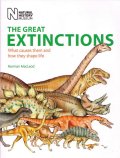
|
|
Extinction: Not the End of the World?Steve Parker
Natural History Museum
2013
"More than 999 of every 1,000 species that have ever lived on the planet have become extinct. As part of evolution, extinction of the old allows emergence of the new. It is integral to the Earth's continually changing range and richness of life-forms. Extinction: not the end of the world? is a highly readable introduction to the causes of extinction, the different types of extinction and how relevant it is to the world today. The book discusses today's key issues, from biodiversity and conservation to the threat of human extinction, as well as exploring the major extinction events of the past and explaining how scientists know all this. Throughout the book there are engaging extinction case studies from around the world showing, for example, how local extinctions such as the large blue butterfly can be reversed. Presenting the latest research in an accessible and engaging way, this is a complete introduction to an important and often complex subject."
|
Buy from amazon.co.uk 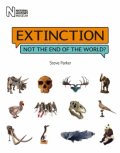
|
|
Alfred Russel Wallace in the Amazon: Footsteps in the ForestSandra Knapp
Natural History Museum
Reformatted edition
2013
"In 1848 British naturalist Alfred Russel Wallace set off for Brazil where he was to spend four years exploring the wildest parts of the Amazon basin. This is an enthralling account of his adventures. It describes the triumphs and disasters and the discoveries that were to lead him to one of the biggest and most controversial ideas of the nineteenth century. Alfred Russel Wallace is justly famous for his discoveries in Southeast Asia, from where he wrote to Charles Darwin outlining his theory of evolution by natural selection. His career as a tropical naturalist, however, began in the Amazon. Wallace concentrated his collecting on the Rio Negro and the Rio Vaupés and his collections and observations proved of great value to the scientific community in England. On his return home in 1852 disaster struck. The ship on which he was travelling caught fire and all his precious collections were destroyed. As he fled the ship he managed to salvage a small tin box with a few delicate pencil drawings. Wallace's Amazonian adventure is told here, using mainly his own words and illustrated with these delicate drawings. He went on to become one of the defining figures of Victorian biology, and this is the story of his beginning."
|
Buy from amazon.co.uk 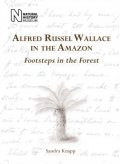
|
|
Driven to Extinction: The Impact of Climate Change on BiodiversityRichard Pearson
Natural History Museum
2011
"Drawing upon a wide range of illuminating case studies from around the world, Driven to Extinction provides a balanced and highly readable insight into the potential impacts of climate change on the diversity of life. Richard Pearson meticulously assembles the evidence of how species of plants and animals have reacted to temperature changes in the past, and how they are likely to respond in the future. He shows how different species are interconnected, how subtle yet essential those connections can be, and how severing one link in the complex chain of mutual cooperation and dependency can lead to the breakdown of a once-thriving community and, ultimately, extinction. At the same time, he also explores how climate change can offer some species new opportunities even as it narrows prospects for others, highlighting the adaptability and survival techniques of some of the weirdest and most wonderful creatures on the planet. Exposing successes and flaws in current research, Driven to Extinction is an engaging and unbiased overview of what scientists know - and don't know - about the impacts of climate change."
|
Buy from amazon.co.uk 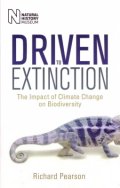
|
|
Fragile Web: What Next for Nature?Editor: Jonathan Silvertown
Natural History Museum
2010
"In Fragile Web a team of international experts explore the biodiversity of the natural world. Drawing on the very latest science, they explain what biodiversity is, how it has evolved and how directly or indirectly humans are responsible for the fate of nature. Today, a quarter of mammals are threatened with extinction, all major ocean fisheries are over-exploited, and life in freshwater is threatened by pollution and over-extraction of water for human use. Written for the general reader with no science background, Fragile Web investigates what can be done to protect nature's remarkable diversity and why it matters to everyone. Published to tie in with the United Nation's 2010 International Year of Biodiversity, Fragile Web provides a timely insight into the state of life on Earth and warns how ignoring the current crisis for biodiversity could fundamentally change the lives of future generations."
|
Buy from amazon.co.uk 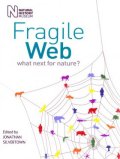
|
|
Animal Migration: Remarkable Journeys by Air, Land and SeaBen Hoare
Natural History Museum
2009
"This spectacular guide explores the mysteries of animal migration over land, through oceans and by air. Lavishly illustrated with more than 300 colour photographs, maps, and illustrations, Animal Migration covers every continent as it traces the routes of 50 remarkable migrations - including those of polar bears, wildebeest, hummingbirds, iguanas, sharks and many others. There is an illustrated introduction that explains how migration works and why animals migrate, either as part of mass migrations or on individual journeys. It also describes the navigation, reproduction and feeding strategies of these animals, as well as discussing the growing threats facing migratory wildlife today. The three sections that follow look in detail at the most extraordinary voyages animals take across land, oceans and by air."
|
Buy from amazon.co.uk 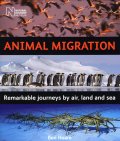
|
|
Treasures of the Natural History MuseumVicky Paterson
Natural History Museum
2009
"The Natural History Museum, London is home to one of the world's most important and comprehensive collections of natural history specimens, literature and artworks. Treasures of the Natural History Museum is a celebration of over 200 of the Museum's most exceptional natural history objects including world-famous specimens and little-known curiosities. Among the many natural wonders featured are: a rare meteorite from Mars; Darwin's celebrated finch specimens; a lethal claw from the dinosaur Baryonyx; and some immaculately dressed fleas. The treasures are selected both from objects on display and those stored behind the scenes; some are familiar and some never seen by the public before. Each one is chosen for its scientific importance, striking beauty or intriguing story, and sometimes all three. Discover a tiny snail no bigger than a letter on this page and one of the first signs of life on Earth in the form of a 3.5 billion-year-old fossil. The book also includes the magnificent 200-year-old Museum building itself with its many architectural treasures. With striking photographs and intriguing stories throughout, this is a fascinating insight into the best of the Museum's unrivalled collection."
|
Buy from amazon.co.uk 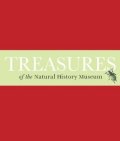
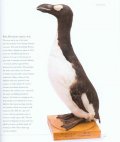
|
|
Walter Rothschild: The Man, the Museum and the MenagerieMiriam Rothschild
Natural History Museum
2008
"Born into one of the wealthiest families in the world, Walter Rothschild became the best known zoologist of his day - and one of Britain's great eccentrics. His extraordinary life traversed the fields of politics and finance as well as zoology and it was packed with achievements and incident, from the establishment of his own private Museum to driving a team of zebra into the forecourt of Buckingham Palace. With the help of evocative photographs Miriam Rothschild has produced a compelling narrative which reveals the complexities and conflicts that this remarkable man faced during his life."
|
Buy from amazon.co.uk 
|
|
The Art and Science of William BartramJudith Magee
Pennsylvania State University Press in association with the Natural History Museum
2007
"William Bartram's love of nature led him to explore the environs of the American Southeast between 1773 and 1777. Here he collected plants and seeds, kept a journal of his observations of nature, and made drawings of the plants and animals he encountered. The completed drawings were sent to his patron in London, and these make up the bulk of the collection held at London's Natural History Museum. The Art and Science of William Bartram brings together, for the first time, all sixty-eight drawings by Bartram held at the Natural History Museum, along with works by some of the most well-known natural history artists of the eighteenth and nineteenth centuries. The volume explores Bartram's writings and artwork and reveals how influential he was in American science of the period. Bartram was an inspiration to a whole generation of young scientists and field naturalists. He was an authority on the birds of North America and on the lifestyle, culture, and language of the indigenous people of the regions through which he traveled. His work influenced Wordsworth, Coleridge, and other writers and poets throughout the past two hundred years, and his drawings reveal an ecological understanding of nature that only truly developed in the latter half of the nineteenth century."
|
Buy from amazon.co.uk 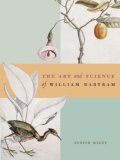
|
|
The Discovery of EvolutionDavid Young
Cambridge University Press in association with the Natural History Museum
2nd edition
2007
"Beginning with the emergence of the early naturalists in the seventeenth century, the scientific discoveries that led up to, and then flowed from, Darwin and Wallace's theory of evolution by natural selection are discussed, and the modern evolutionary studies at the close of the twentieth century are detailed. This new edition of the Discovery of Evolution is fully updated and contains a new chapter on the evolutionary studies of the twentieth century. By approaching the topic of evolution in this way, it is made accessible to the non-specialist and no previous study of biology is required."
|
Buy from amazon.co.uk 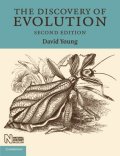
|
|
The Natural History Museum Book of PredatorsSteve Parker
Carlton Books in association with the Natural History Museum
2001
"Steve Parker brings you face to face with nature's deadliest creatures. They include not only world-famous big killers such as the tiger, polar bear, wolf, eagle and great white shark, but also the most venomous snakes, spiders and scorpions on Earth, as well as lesser-known yet just as lethal hunters – massive but stealthy anacondas, lurking alligators, innocent-looking sea wasps and coneshells, and small but fearsome dragonflies and praying mantis. The Natural History Museum Book of Predators explains exactly what makes an animal an effective hunter. It shows you the amazing senses that predators use to detect prey, uncovers their cunning traps and deadly poisons, and portrays the incredible arsenal of weapons including claws, teeth, jaws, spikes and horns. Steve Parker also delves into the lives of deadly pack hunters who co-ordinate their kills of large prey, exposes animals who steal meat from others rather than catch their own, and assesses the risks of people falling victim to a predator's power. Discover that it's not always strength, skill and cunning that decide whether an animal gets its meal or becomes one!"
|
Buy from amazon.co.uk 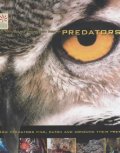
|
|
Nature's Connections: An Exploration of Natural HistoryNicola McGirr
Natural History Museum
2000
"Using anecdotes and examples from the work of The Natural History Museum's scientists, this book introduces readers to how the natural sciences are helping to unravel some of the key issues facing the world. It looks at the background of natural sciences, the setting up of the natural science institutions, the role of the scientists in the past, present and future, and the place of natural science in the future."
|
Buy from amazon.co.uk 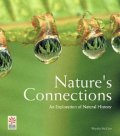
|
|
Alfred Russel Wallace in the Amazon: Footsteps in the ForestSandra Knapp
Natural History Museum
1999
"The British naturalist Alfred Russel Wallace set out for the Amazon in 1848 to collect natural history specimens. During his time there, he spent almost two years travelling up the Rio Negro, a region few Europeans had explored. A fire on the return journey to England destroyed all of his collections but among the possessions rescued was a collection of sketches of fish, later presented to The Natural History Museum. This book is an account of Wallace's expedition describing the naturalist in the making, the tragic loss of his collections and how this affected his future. Throughout the book the role of chance in the making of naturalists and the course of science in general is explored. The work is illustrated with the fish sketches, palm drawings and scenes of life in the Amazon."
|
Buy from amazon.co.uk 
|
|
EvolutionColin Patterson
Natural History Museum
2nd edition
1998
"Introducing ideas on how life originated and diversified on earth, this text provides a summary of modern evolutionary theory. It includes chapters on neural evolution and gene evolution, molecular evolution, and the latest theories in the late 1990s on the evolution of humans."
|
Buy from amazon.co.uk 
|
|
Birds Of Man's WorldDerek Goodwin
British Museum (Natural History) / Cornell University Press
1978
|
Buy 2010 ed. from amazon.co.uk 
|
|